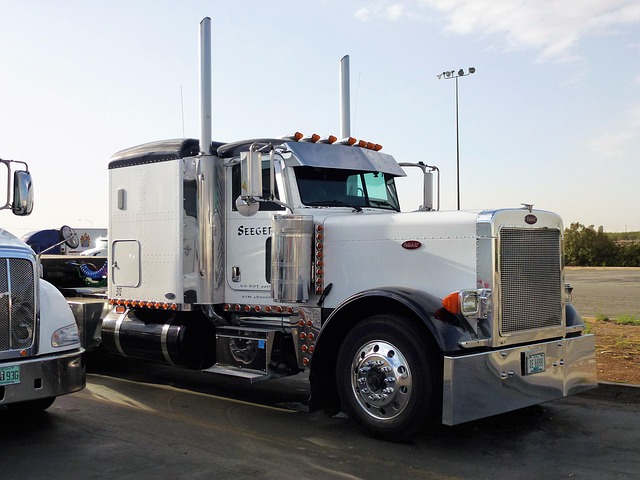Registering a car in California is a straightforward process, but understanding the requirements and gathering the right documents is crucial. This guide will walk you through each step, from ensuring your vehicle’s eligibility to obtaining a unique Vehicle Identification Number (VIN) verifier from the DMV. Learn how to complete the registration either in-person or online efficiently, and discover the essential fees involved.
- Understand California Car Registration Requirements
- Gather Necessary Documents for Car Registration
- Visit a DMV or Use Online Services for Registration
- Verify Vehicle Identification Number (VIN) Accuracy
- Pay Car Registration Fees and Receive Your License Plate
Understand California Car Registration Requirements

Before registering your car in California, it’s crucial to understand the state’s specific requirements. The California Department of Motor Vehicles (DMV) mandates several steps for car registration, including a thorough vehicle inspection. This process involves verifying the Vehicle Identification Number (VIN) to ensure the vehicle’s authenticity and history. A reliable VIN verifier is essential for this step, and many services now offer mobile VIN inspections for added convenience.
During registration, your vehicle must pass an emissions test and safety inspection. Additionally, you’ll need to provide proof of insurance and complete necessary documentation. By adhering to these requirements, including the use of a DMV VIN verifier or a mobile VIN inspection service, you can streamline the car registration process in California.
Gather Necessary Documents for Car Registration

Before you start the registration process, ensure you have all the required documents ready. The California Department of Motor Vehicles (DMV) requires a plethora of information to verify your car’s ownership and history. Key among these is the Vehicle Identification Number (VIN), which acts as a unique fingerprint for every vehicle. You’ll need to provide this number via a valid DMV vin verifier, whether it’s done online or through their physical inspection process.
Another crucial document is proof of insurance, which showcases your financial responsibility and compliance with state laws. Additionally, you’ll require identification documents such as a driver’s license or passport. For vehicles that are not brand new, a vehicle history report from services like Carfax or a mobile vin inspection/verification can be beneficial. These reports detail the car’s past, including any accidents or outstanding issues, ensuring a smooth registration process.
Visit a DMV or Use Online Services for Registration

Visiting a DMV office or utilizing online services are two convenient methods to register your vehicle in California. If you prefer a more traditional approach, scheduling an appointment at your local Department of Motor Vehicles (DMV) is recommended. Staff will guide you through the registration process, which involves providing essential documents and verifying your vehicle’s information, including a Vehicle Identification Number (VIN) inspection. This ensures that your car matches the details on record, enhancing security measures against fraud.
For those seeking a more efficient and modern option, California’s DMV offers online registration services. You can initiate the process by using their official website and accessing the digital VIN verifier tool. This tool allows you to input your vehicle’s unique VIN and receive instant validation, making it an excellent alternative for busy individuals who want to avoid the hassle of waiting in line at a DMV.
Verify Vehicle Identification Number (VIN) Accuracy

Before registering your car in California, it’s crucial to ensure the Vehicle Identification Number (VIN) is accurate and valid. The VIN is a unique code that identifies your vehicle, and any errors or discrepancies can lead to registration issues. One effective way to verify the VIN accuracy is by using a DMV vin verifier or a mobile vin verification tool. These services allow you to cross-check the VIN against official databases to ensure it matches the vehicle’s specifications.
A vin inspection is essential because it helps prevent registration mistakes and potential issues with California’s Department of Motor Vehicles (DMV). By utilizing a mobile vin verifier, you can quickly and conveniently validate your car’s VIN, making the registration process smoother. This step-by-step verification not only saves time but also minimizes the risk of errors that could delay or even prevent successful vehicle registration.
Pay Car Registration Fees and Receive Your License Plate

After submitting your application, it’s time to complete another crucial step in the car registration process: paying the registration fees and receiving your license plates. The California Department of Motor Vehicles (DMV) will review your documents and, if approved, you’ll be charged a set fee for vehicle registration. This fee covers various costs associated with maintaining road safety and infrastructure. Once the payment is processed, you can expect your personalized license plates to be issued.
A convenient option available in California is the use of a mobile VIN verifier. This service allows you to complete the verification process swiftly by providing an accurate read of your Vehicle Identification Number (VIN) using a mobile device or online platform. Some even offer the additional benefit of performing a mobile VIN inspection, ensuring that your vehicle’s details are up-to-date and accurate before registration.
Registering your car in California is a straightforward process that requires understanding specific requirements and gathering essential documents. By visiting a DMV or using online services, you can efficiently complete the registration. Verifying the Vehicle Identification Number (VIN) accuracy is crucial to ensure a seamless experience. Once confirmed, paying the necessary fees will grant you a set of license plates for your newly registered vehicle. Utilize trusted tools like a dmv vin verifier to streamline this process and avoid any potential delays.
